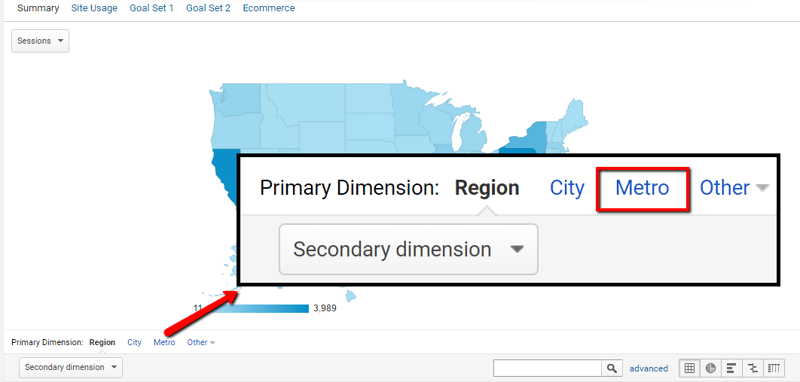Deciphering the Value of Second Measurement in Google Analytics: Everything About Its Value and Impact
In the realm of digital analytics, the utilization of secondary dimensions within Google Analytics offers as a pivotal device for critical much deeper layers of data understandings. The importance of secondary measurements lies in their ability to give a nuanced view of individual behavior and communication with a site or system.
Understanding Second Measurements in Google Analytics
The understanding of secondary measurements in Google Analytics is vital for getting deeper understandings into individual behavior and internet site efficiency. While primary measurements provide basic data points such as web traffic resources and web page views, additional measurements enable a more nuanced analysis by giving additional context to these primary metrics. By including secondary measurements, individuals can segment and filter their data to uncover patterns and trends that might not be quickly evident.

Revealing the Perks of Secondary Dimensions
Structure upon the foundational understanding of additional dimensions in Google Analytics, exploring the advantages they provide reveals important insights for improving data analysis and decision-making. By incorporating secondary dimensions, individuals can delve deeper right into their information, acquiring a more detailed view of customer actions, content efficiency, and other crucial metrics.
Furthermore, second measurements give context to primary data, providing additional layers of details that can aid in recognizing customer interactions and preferences. This improved understanding can direct critical decision-making, bring about more targeted advertising and marketing projects, internet site optimizations, and total enhanced efficiency. Essentially, additional measurements act as an effective device for opening much deeper insights and making the most of the utility of Google Analytics for companies and web site owners.
Leveraging Additional Measurements for Boosted Insights
By using the power of additional measurements in Google Analytics, businesses can discover deeper insights that drive educated decision-making and strategic optimization initiatives. Leveraging second dimensions allows organizations to delve beyond surface-level data and obtain a much more comprehensive understanding of individual behavior, target market demographics, traffic resources, and web site efficiency. By incorporating main dimensions like web traffic resources with additional measurements such as geographical location or tool group, organizations can recognize which tools or regions are driving the most useful traffic to their website.
Moreover, secondary measurements make it possible for businesses look these up to sector and examine data more efficiently, aiding them identify fads, patterns, and chances that may have or else gone undetected. By using additional measurements, companies can customize their advertising and marketing strategies, content, and customer experience to better meet the needs and preferences of their target market. Fundamentally, leveraging second dimensions in Google Analytics empowers organizations to make data-driven choices that lead to improved efficiency, boosted ROI, and sustainable growth.

Influence of Second Measurements on Data Evaluation
Enhancing data evaluation via the use of second measurements in Google Analytics supplies services with a deeper understanding of their on-line efficiency metrics. By integrating second measurements, such as time of day, geographic area, or gadget classification, organizations can discover valuable understandings that might have been ignored with main dimensions alone. This boosted degree of granularity permits even more precise segmentation of data, enabling businesses to recognize patterns, trends, and correlations that can drive tactical decision-making.

Making Best Use Of Possible: Additional Dimensions Approaches
One vital method is to incorporate second measurements with key measurements to acquire a comprehensive view of user communications. Pairing the primary dimension of 'source/medium' with additional measurements like 'landing web page' or 'device classification' can expose which channels are driving web traffic to specific web pages or how user behavior varies across tools.
In addition, making use of second dimensions to sector data based on user demographics, actions, or modern technology can help organizations tailor their advertising and marketing initiatives to particular target market segments. This targeted strategy can lead to improved conversion rates, boosted customer experiences, and eventually, raised ROI. By taking full advantage of the capacity of additional Website dimensions in Google Analytics, organizations can make educated choices, maximize their on the internet visibility, and drive lasting growth.
Conclusion
In final thought, second dimensions in Google Analytics play an essential role in providing much deeper insights and boosting information analysis. Incorporating additional measurements into data evaluation strategies can lead to even more informed decision-making and improved total efficiency.
While main dimensions offer essential data points such as traffic resources and web page sights, second dimensions allow for an extra nuanced evaluation by providing extra context to these key metrics. By incorporating main measurements like website traffic sources with additional dimensions such as geographic location or device group, services can determine which regions or devices are driving the most useful website traffic to their web site.
By integrating second measurements, such as time of day, geographical area, or gadget group, companies can reveal beneficial understandings that may have been overlooked with key dimensions alone. One essential technique is to combine additional measurements with main measurements to obtain a detailed view of user communications. Combining the primary measurement of 'source/medium' with additional dimensions like 'touchdown page' or 'device group' can disclose which networks are driving traffic to certain pages or exactly how user behavior differs throughout devices.